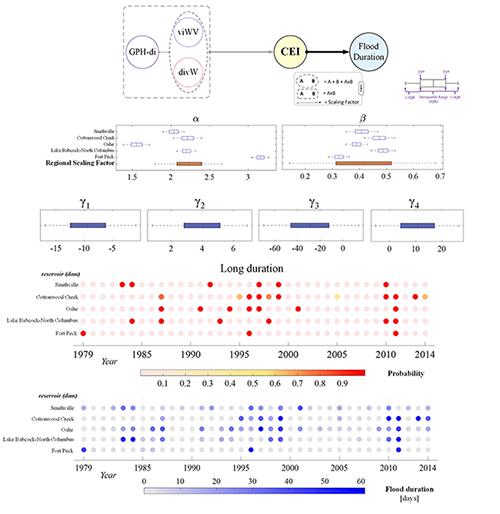Governance of Long-Duration Floods
Consequences of long-term inundation of floodplains, residential and commercial areas, and critical infrastructure systems cannot be fully comprehended without a clear understanding of the variability in the duration of the floods. Long-duration floods can cause substantial damages and prolonged interruptions to water resources facilities and critical infrastructure systems. Analyses of their causal structure are invaluable for evaluating reservoir and river system operation policies and for flood preparation. Despite its importance, most of the recent flood-related studies have not formally explained the physical mechanisms of long-duration flood events that can evoke substantial damages to properties and infrastructure systems.

Coupled flow accumulation and atmospheric blocking govern flood duration (npj Climate and Atmospheric Science)
1City University of New York (City College), USA
2Hong Kong University of Science and Technology, China
3University of Lisbon, Portugal
Topics
- Water Cycle
- Modeling
- Extreme Events
